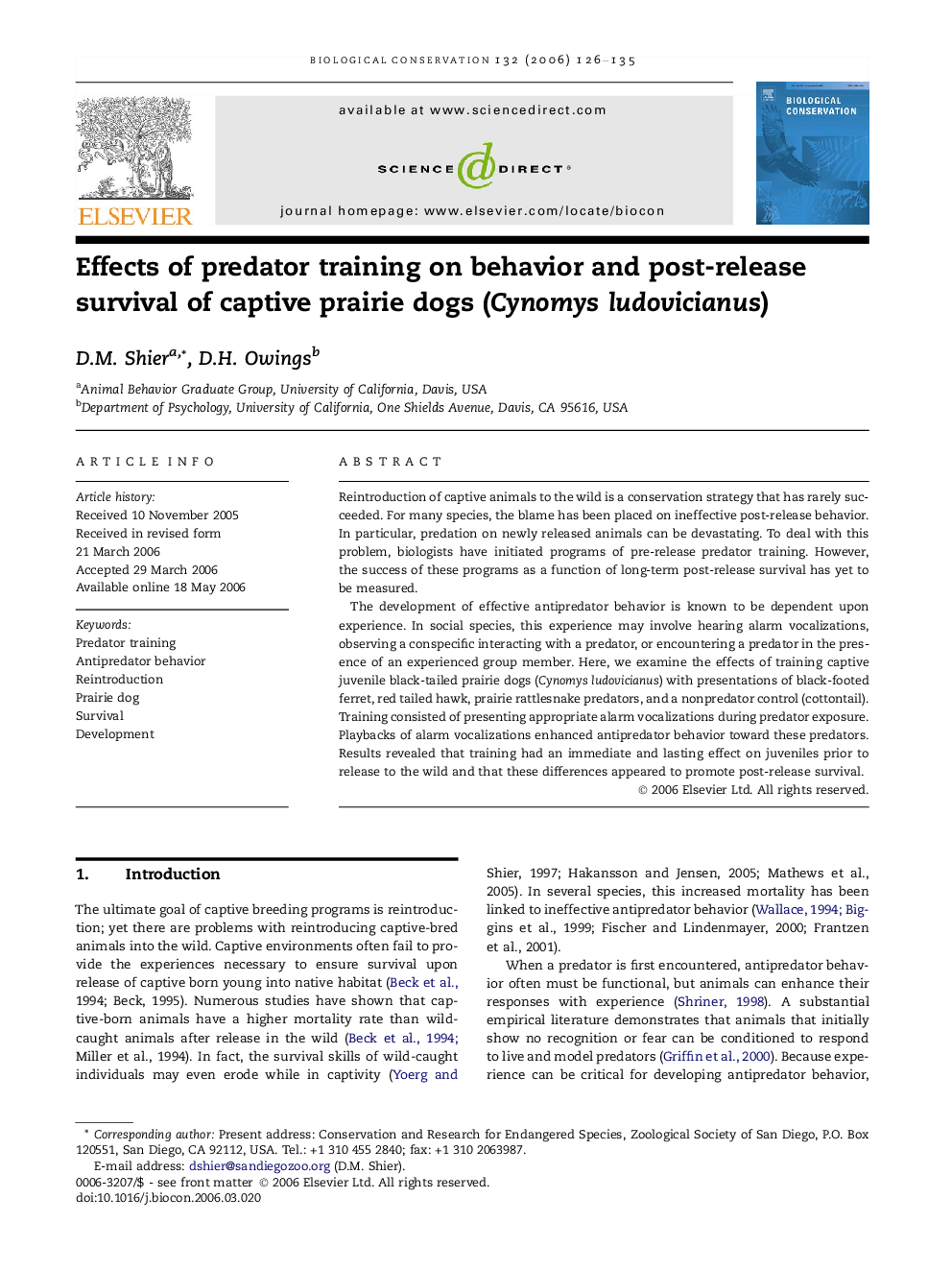| Article ID | Journal | Published Year | Pages | File Type |
|---|---|---|---|---|
| 4387657 | Biological Conservation | 2006 | 10 Pages |
Reintroduction of captive animals to the wild is a conservation strategy that has rarely succeeded. For many species, the blame has been placed on ineffective post-release behavior. In particular, predation on newly released animals can be devastating. To deal with this problem, biologists have initiated programs of pre-release predator training. However, the success of these programs as a function of long-term post-release survival has yet to be measured.The development of effective antipredator behavior is known to be dependent upon experience. In social species, this experience may involve hearing alarm vocalizations, observing a conspecific interacting with a predator, or encountering a predator in the presence of an experienced group member. Here, we examine the effects of training captive juvenile black-tailed prairie dogs (Cynomys ludovicianus) with presentations of black-footed ferret, red tailed hawk, prairie rattlesnake predators, and a nonpredator control (cottontail). Training consisted of presenting appropriate alarm vocalizations during predator exposure. Playbacks of alarm vocalizations enhanced antipredator behavior toward these predators. Results revealed that training had an immediate and lasting effect on juveniles prior to release to the wild and that these differences appeared to promote post-release survival.
